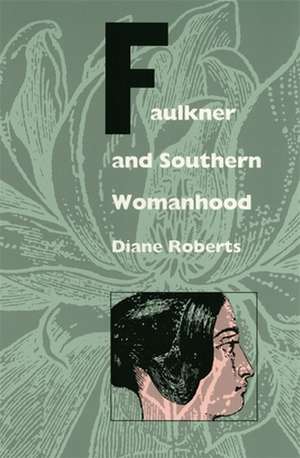Faulkner and Southern Womanhood
Autor Diane Robertsen Limba Engleză Paperback – 31 iul 1995
Preț: 247.52 lei
Nou
Puncte Express: 371
Preț estimativ în valută:
47.37€ • 49.81$ • 39.14£
47.37€ • 49.81$ • 39.14£
Carte tipărită la comandă
Livrare economică 16-30 aprilie
Preluare comenzi: 021 569.72.76
Specificații
ISBN-13: 9780820317410
ISBN-10: 0820317411
Pagini: 264
Dimensiuni: 152 x 227 x 20 mm
Greutate: 0.36 kg
Ediția:New.
Editura: University of Georgia Press
ISBN-10: 0820317411
Pagini: 264
Dimensiuni: 152 x 227 x 20 mm
Greutate: 0.36 kg
Ediția:New.
Editura: University of Georgia Press
Notă biografică
Textul de pe ultima copertă
In Faulkner and Southern Womanhood, Diane Roberts examines the vexed and contradictory responses of the South's most celebrated novelist to the traditional representations of women that were bequeathed to him by his culture. The very mention of "the South", Roberts observes, conjures up a crazy quilt of images - from the romantic to the violent, from the gracious and glamorous to the backward and racist. The phrase "southern woman" likewise evokes a whole range of stock characters and stereotypes. Tracing the ways in which William Faulkner characterized women in his fiction, Roberts posits six familiar representations - the Confederate woman, the mammy, the tragic mulatta, the new belle, the spinster, and the mother - and, through close feminist readings, shown how the writer reactivated and reimagined them. In so doing, Roberts sees Faulkner as both a product and a producer of that multi-faceted place - and metaphor - called the South. "As a southerner", she writes, "Faulkner inherited the images, icons, and demons of his culture. They are part of the matter of the region with which he engages, sometimes accepting, sometimes rejecting". Drawing on extensive research into southern popular culture and the findings and interpretations of historians, Roberts demonstrates how Faulkner's greatest fiction, published during the 1920s and 1930s, grew out of his reactions to the South's attempts to redefine and solidify its hierarchical conceptions of race, gender, and class. During the era in which Faulkner's psyche was formed, the South's efforts to maintain its cultural stability included everything from lynching to erecting Confederate monuments and apotheosizing Gone with the Wind.Struggling to understand his region, Roberts says, Faulkner exposed the South's self-conceptions as quite precarious, with women slipping toward masculinity, men slipping toward femininity, and white identity slipping toward black. At their best, according to Roberts, Faulkner's novels reveal the South's failure to reassert the boundaries of race, gender, and class by which it traditionally sustained itself. Earlier studies of female characters in Faulkner's novels have charged the writer with unrelenting misogyny or have read these characters as mythic embodiments of "the life force". Offering a richer view befitting the writer's complexities and contradictions, Faulkner and Southern Womanhood revises, reimagines, and reinvigorates our understanding of Faulkner the artist and Faulkner the southerner. It reveals, fully and contentiously, the challenge Faulkner poses to the South's most sacred icons.


















